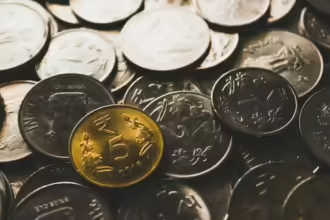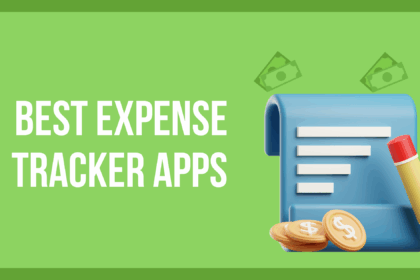In today’s fast-paced world, saving money can feel like a challenge, but it doesn’t have to be. Anyone can start building better financial habits with the right approach and creativity. One great way to get started is through micro-saving challenges — fun, small-scale savings goals that make the process less overwhelming and more achievable.
This article will walk you through several 30-day money-saving ideas designed to help you take small, manageable steps toward improving your financial health.
What is Micro-Saving?
Micro-saving refers to the practice of regularly setting aside small amounts of money. While the individual contributions might seem minor, they can add to significant amounts over time. It’s a more approachable way to save, especially for people who find traditional savings methods hard to maintain.
By focusing on smaller goals, micro-saving helps build momentum and creates a consistent habit that can lead to long-term financial success.
Why 30-Day Challenges?
Thirty-day challenges are popular because they’re long enough to form a habit but short enough to maintain motivation. They provide a clear start and end date, making them easier to commit to than open-ended goals.
30-Day Money-Saving Ideas
1. The Classic Penny Challenge
The Classic Penny Challenge is an ideal way to ease into a consistent savings habit without feeling overwhelmed. It’s simple, approachable, and a fun way to start setting money aside daily. Here’s a step-by-step breakdown of how it works and some tips to make it more effective.
How It Works:
- Start with just a penny: On day one, save 1 cent.
- Increase the amount each day: On day two, save 2 cents; on day three, save 3 cents, and so forth.
- Continue this pattern for 30 days: By the month’s end, you will save $3.00 on day 30.
- Total savings at the end of 30 days: While the daily contributions are small, they add up, resulting in $4.65 saved over the 30 days.
Though it may not seem like much initially, this method helps you build the habit of saving regularly. Over a year, you can extend this challenge to save nearly $500, making it a great long-term savings strategy.
2. The Reverse Penny Challenge
This reverse saving challenge, where you start with a dollar and subtract a cent each day, works because it gradually reduces the daily saving amount, making it more manageable as the days progress. Here’s why this method is effective:
Why It Works:
- Easy to Start: On day one, you only commit to saving $1, which is a small and doable amount for most people.
- Motivation Grows: Watching the money add up daily keeps you engaged. Even though the amount decreases, you’re consistently saving, keeping the momentum.
- Perfect for Small Purchases: By the end of 30 days, you’ll have $15.50 — an ideal amount for small treats or fun activities.
Example Breakdown:
- Day 1: Save $1.00
- Day 2: Save $0.99
- Day 3: Save $0.98
- …
- Day 30: Save $0.71
- Total Savings: $15.50
This challenge is not only fun and easy to stick to but also helps you build the habit of saving without feeling overwhelmed. Plus, you’ll have enough saved for small rewards or even kickstart a bigger savings goal!
3. The $5 Bill Challenge
The $5 Bill Challenge is a simple savings method where you put aside every $5 bill you receive. It’s a passive way to save, as you don’t have to put money aside each day actively. Over time, the accumulated $5 bills can add up to a significant amount.
The $5 Bill Challenge is a straightforward, passive savings strategy that’s fun and effective. Here’s how it works:
- Every time you receive a $5 bill, whether as a change from a purchase or as part of a larger amount, set it aside.
- Keep the $5 bills separate from your regular spending money, perhaps in an envelope, jar, or separate account.
- Continue this process over time, and watch the amount grow without thinking too much about it.
Why It’s Effective:
- No daily pressure: Unlike some saving challenges, you don’t have to worry about putting away a fixed amount every day. You save whenever you happen to get a $5 bill.
- Small and manageable: $5 is a small enough amount that setting aside doesn’t feel like a huge sacrifice, but it adds up quickly.
- Passive accumulation: Since you’re not actively saving daily, it’s a surprise to see how quickly those $5 bills add up over weeks or months.
4. The No-Spend Challenge
The No-Spend Challenge is a powerful personal finance challenge designed to help you control impulse spending, boost your savings, and improve your financial habits. By committing to a specific period of refraining from spending on non-essential items, you can reset your spending behavior and gain better control over your finances.
How the No-Spend Challenge Works:
- Start by deciding how long you’d like to challenge yourself. Common durations are 30 days, 60 days, or even longer if you’re ambitious.
- Keep the timeframe realistic—shorter challenges are great for beginners, while longer ones work well for experienced savers.
- Identify what you consider to be non-essential spending. This typically includes dining out, entertainment, clothing, or online shopping.
- Groceries, utilities, rent, and healthcare remain part of your normal spending routine.
- During the chosen period, refrain from spending on any non-essential items.
- Be mindful of urges to make impulse purchases, and stay committed to your savings goal.
Tips for Success:
- Plan ahead: Prepare meals at home, find free entertainment options, and stock up on essentials before the challenge starts.
- Write down every day you successfully avoid spending, and calculate how much you’ve saved.
- Set a goal for the money you’re saving, such as building an emergency fund, paying down debt, or treating yourself at the end.
The No-Spend Challenge is a great way to break bad financial habits, save money, and develop a more intentional approach to spending!
5. The Pantry Challenge
The Pantry Challenge is a simple and creative way to make the most of the food you already have at home. Using ingredients from your pantry, fridge, and freezer can reduce grocery expenses, reduce food waste, and have fun experimenting with new meal combinations.
How the Pantry Challenge Works:
- Start by taking stock of everything in your pantry, fridge, and freezer. Check for canned goods, dried foods, grains, and frozen vegetables. This gives you a clear idea of what ingredients you can work with.
- Decide how long you want to commit to the challenge. It could be a week, two weeks, or even a month.
- The longer the challenge, the more creative you may need to get as you run low on certain ingredients.
- Based on your pantry inventory, plan meals that use the ingredients you already have. Think about dishes that can use canned goods, grains, and frozen or leftover items.
- If you’re missing key ingredients (like fresh produce, spices, or dairy), make a small grocery list and only buy the essentials.
- Limit your shopping to **minimal items** to stay within the spirit of the challenge.
- Once you have your meal plan, start cooking using the ingredients you have on hand.
- Experiment with recipes and have fun creating meals that might surprise you in flavor and variety.
6. The 24-Hour Rule
The 24-Hour Rule is a simple but effective strategy for impulse control and mindful spending. It involves waiting 24 hours before purchasing, especially for larger or non-essential items.
7. The Spare Change Challenge
The Spare Change Challenge is an easy way to save money by simply setting aside the loose change you accumulate throughout the day. Over time, the small amounts can add up to a surprising sum, making it a great option for anyone looking to save with minimal effort.
- Collect Spare Change: Each time you receive change from a cash transaction, whether it’s coins or small bills, set it aside instead of spending it.
- Use a designated jar, piggy bank, or a dedicated wallet or purse section to store the change.
8. The Subscription Audit
The subscription audit is a straightforward yet powerful way to regain control over your finances by assessing all the services you regularly subscribe to. With so many digital and physical subscriptions available, losing track of your monthly pay is easy.
By performing a Subscription Audit, you can identify unnecessary or underutilized subscriptions, allowing you to save money and declutter your digital life.
9. The Brown Bag Challenge
The Brown Bag Challenge is a personal finance challenge that involves bringing your lunch to work or school instead of buying it. It’s a great way to save money and eat healthier.
10. The Energy-Saving Challenge
The Energy-Saving Challenge is a practical and environmentally friendly way to reduce your household energy consumption, which can lead to significant savings on your utility bills. Focusing on small but impactful changes in your daily routine can reduce unnecessary energy use and lower your costs over time.
Tips for Success
- Set Clear Goals: Know why and what you’re saving for.
- Track Your Progress: Use an app or a simple spreadsheet to monitor your savings.
- Make it Visual: Create a savings thermometer or jar to see your progress.
- Celebrate Small Wins: Acknowledge your progress, no matter how small.
- Stay Accountable: Share your challenge with friends or family for support.
Micro-saving challenges are an excellent way to kick-start your savings habit. They make saving money more manageable and even fun. Remember, the key is consistency.
Even small amounts saved regularly can lead to significant results over time. Choose a challenge that resonates with you, adapt it to your lifestyle, and watch your savings grow. Happy saving!












